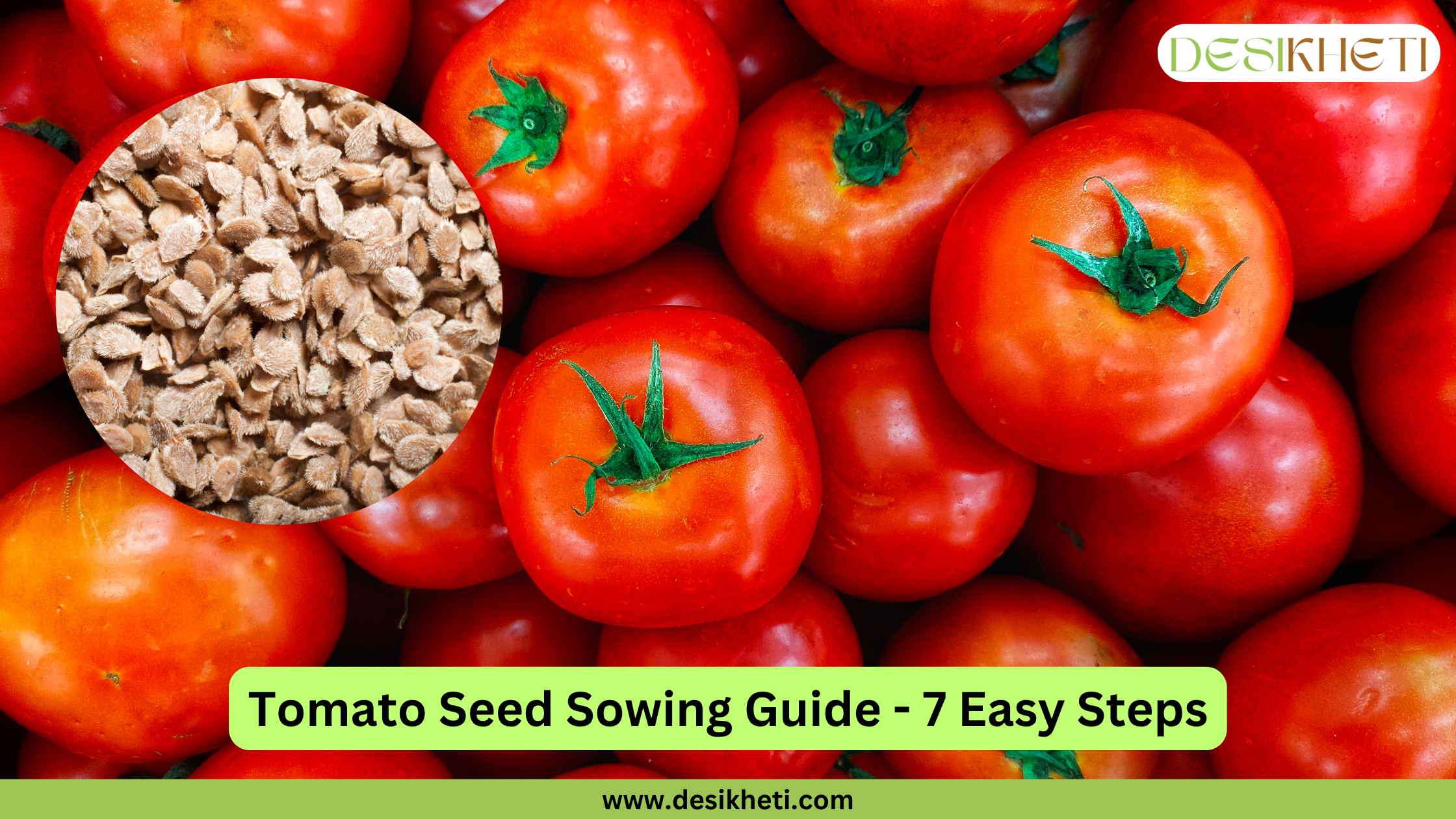Table of Contents
Introduction
Tomatoes (Solanum lycopersicum) are one of the most widely cultivated and consumed vegetables in the world, known for their vibrant color, juicy texture, and rich nutritional value. From salads and curries to sauces and juices, tomatoes are a key ingredient in countless dishes across Indian and global cuisines. Packed with antioxidants like lycopene, as well as vitamins A, C, and potassium, tomatoes support heart health, boost immunity, and aid digestion.
Beyond their culinary and health benefits, tomato cultivation offers great rewards for home gardeners and farmers alike. In this blog, we’ll walk you through 7 simple steps to successful tomato farming.

Step 1: Climate, Soil, and Season for Sowing Tomato Seeds

Climate for Tomato Cultivation
Tomato is a warm-season crop. For healthy growth and maximum yield, the ideal daytime temperature ranges between 21°C and 24°C, while fruit setting is most effective when night temperatures stay between 15°C and 20°C.
Extremely high temperatures especially above 38°C combined with dry winds and low humidity can harm tomato plants, reducing fruit set and quality. Excess heat can also affect pigment development, particularly lycopene, the red pigment that gives ripe tomatoes their color.
Soil for Tomato Cultivation
Tomatoes grow well in various soil types, from sandy to clay-rich soils. Well-drained, fertile loamy soil with fair moisture-holding capacity is ideal for growing tomatoes. Good drainage is crucial, as tomato plants are highly sensitive to waterlogging, which can lead to root rot and poor growth. The ideal soil pH ranges between 6.0 and 7.0.
Season for Tomato Cultivation
Tomatoes can be cultivated almost year-round in India, with slight variations across regions. In North India, seeds are typically sown in November and transplanted by January. In South India, sowing usually begins in August. For summer crops, sowing is done in March, followed by transplanting in April or May.
Step 2: Selecting the Right Tomato Variety

Various factors, such as climate, season, local market preferences, and more, need to be considered when selecting a tomato variety. For your convenience, a few tomato varieties are listed below.
Step 3: Procuring Quality Tomato Seeds
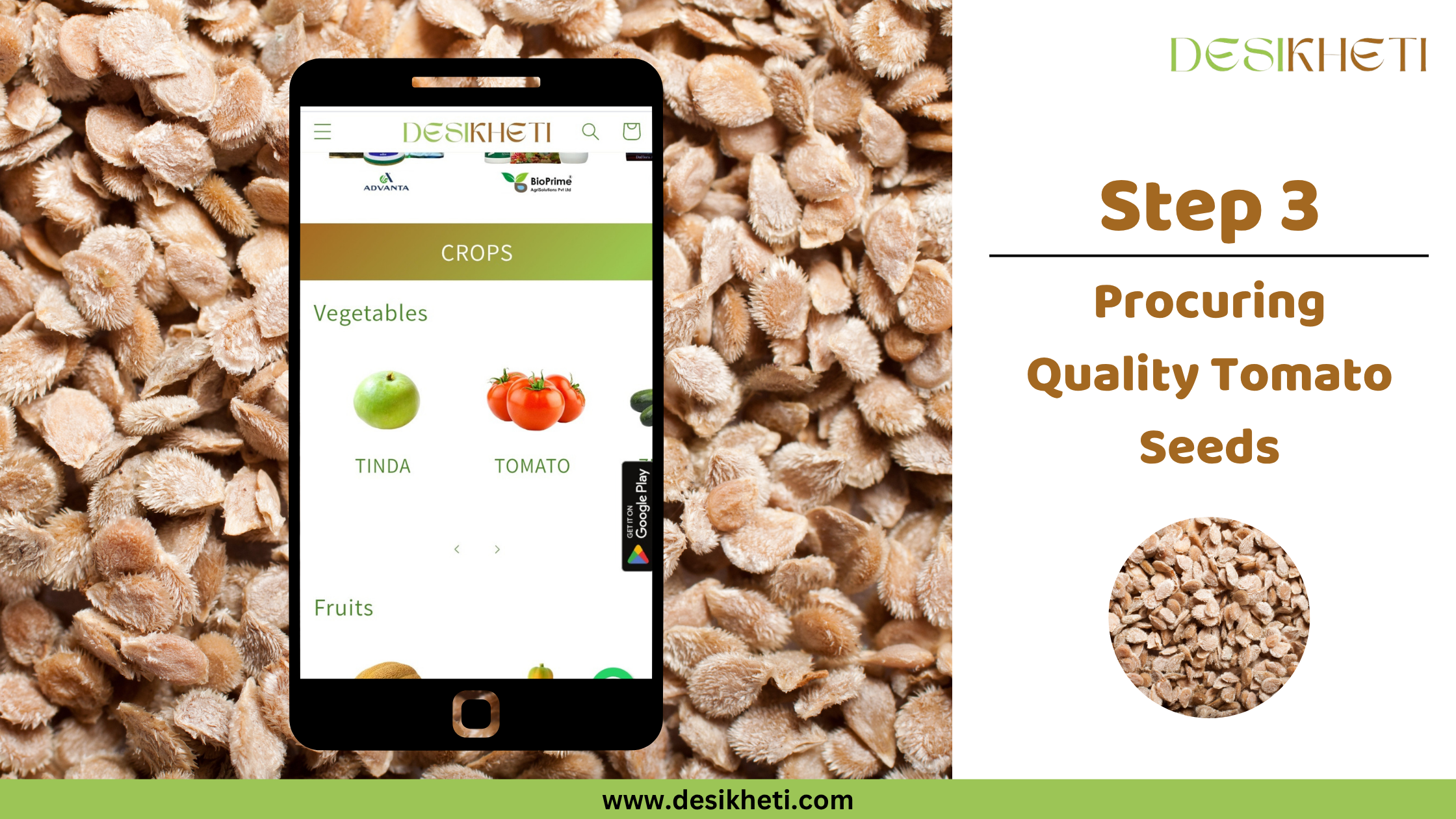
For successful tomato farming, selecting high-quality seeds is essential. Even with the best cultivation practices, poor-quality seeds can result in low yields and weak plant health. Looking for the best tomato seeds?
DesiKheti offers a wide range of premium tomato seeds tailored to your farming needs. Browse our collection, place your order online, and enjoy fast, reliable delivery right to your doorstep.
Step 4: Land Preparation for Sowing Tomato Seeds
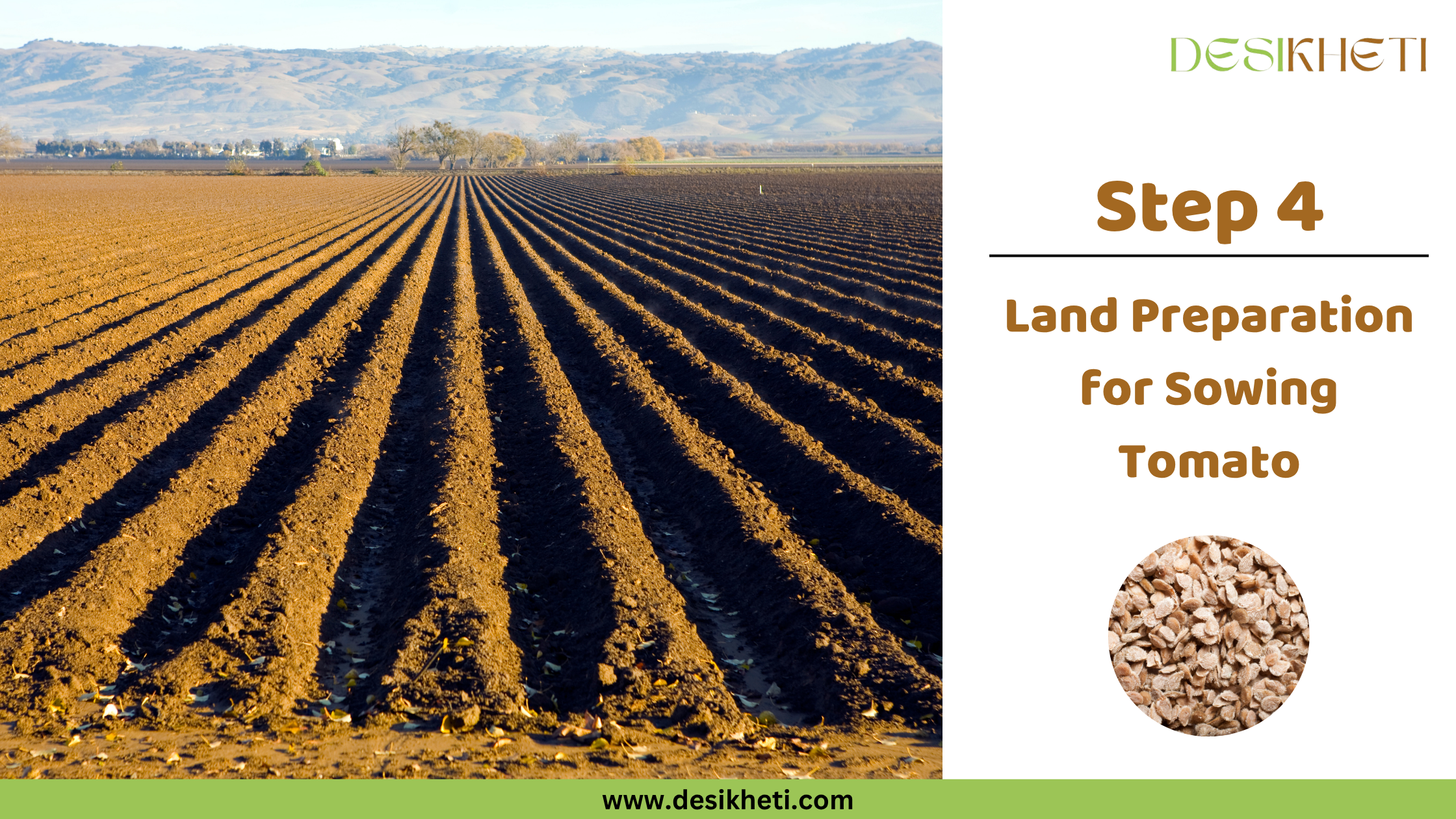
Proper land preparation is important for healthy tomato growth. The soil can be ploughed 4 to 5 times to achieve a fine tilth. Apply 10 to 15 tonnes of FYM per hectare during the last ploughing.

Step 5: Sowing Tomato Seeds
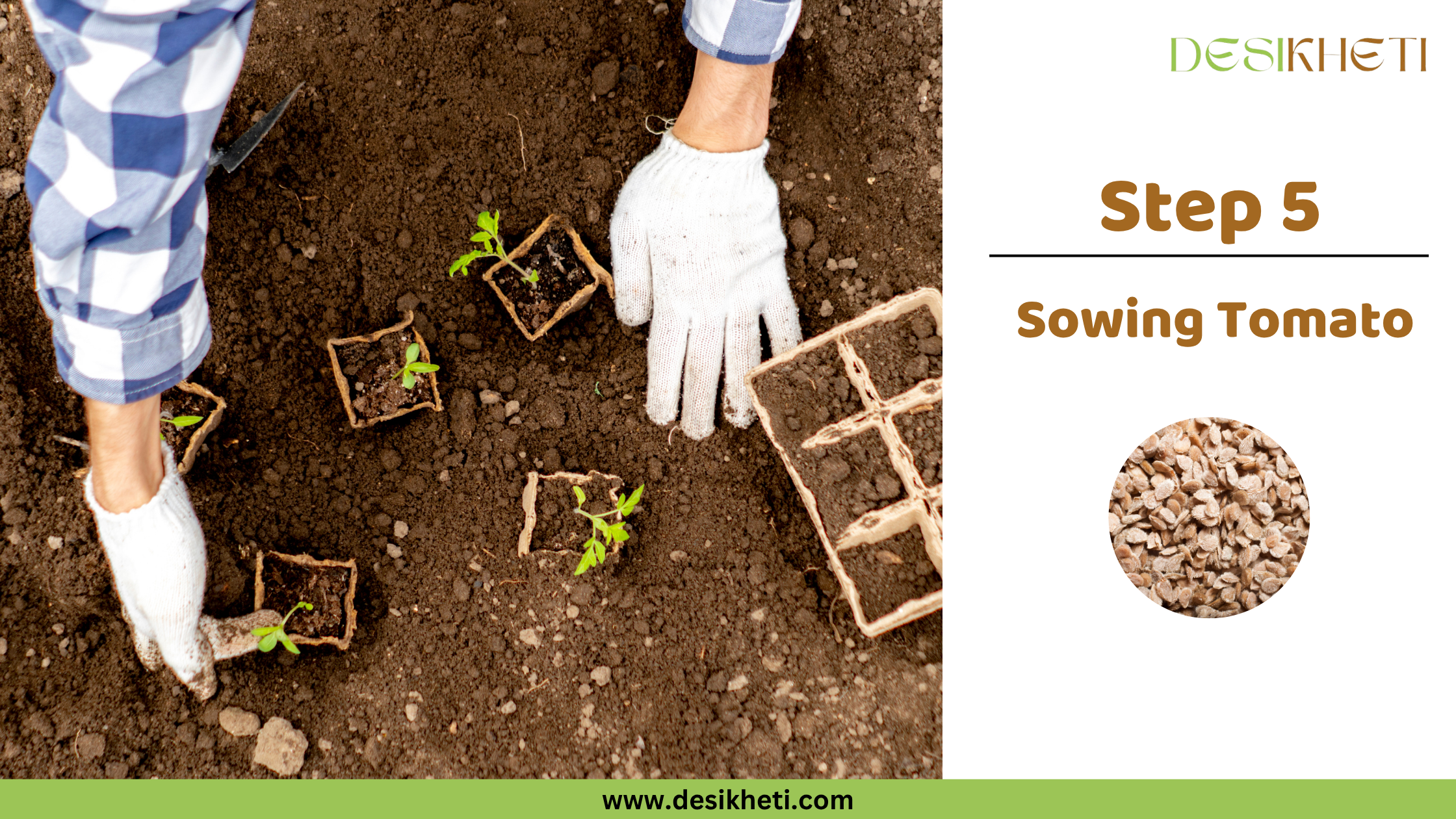
Seed rate: An average of 60 grams of seeds per acre of land. However, the exact seed rate varies based on the method of sowing, spacing, etc.
Generally, tomato seeds are first sown in the nursery, and the seedlings are transplanted to the main field.
For a nursery, usually an area of 225 m² is sufficient. Well-decomposed FYM is mixed at the rate of 3 kg per m² of the nursery bed. Generally, raised beds are prepared, and seeds are sown in lines with a 7.5 cm distance between the rows. The beds are covered with straw or polythene until the seeds germinate. Nurseries can also be grown in polyhouses. Seedlings are transplanted at 25 to 30 days old, when they are 10–15 cm tall.
In some regions, tomatoes are directly sown. Direct sowing is generally done to reduce infestation by root-knot nematodes, bacterial wilt, and damping-off.
Generally, for indeterminate varieties and hybrids, a row-to-row spacing of 60 to 120 cm and a plant-to-plant distance of 45 to 75 cm are adopted. In the case of determinate types, a row-to-row spacing of 45 to 60 cm and a plant-to-plant distance of 30 to 40 cm are followed. However, the exact spacing may vary based on factors such as the method of sowing, region, etc.
Step 6: Care After Sowing Tomato Seeds
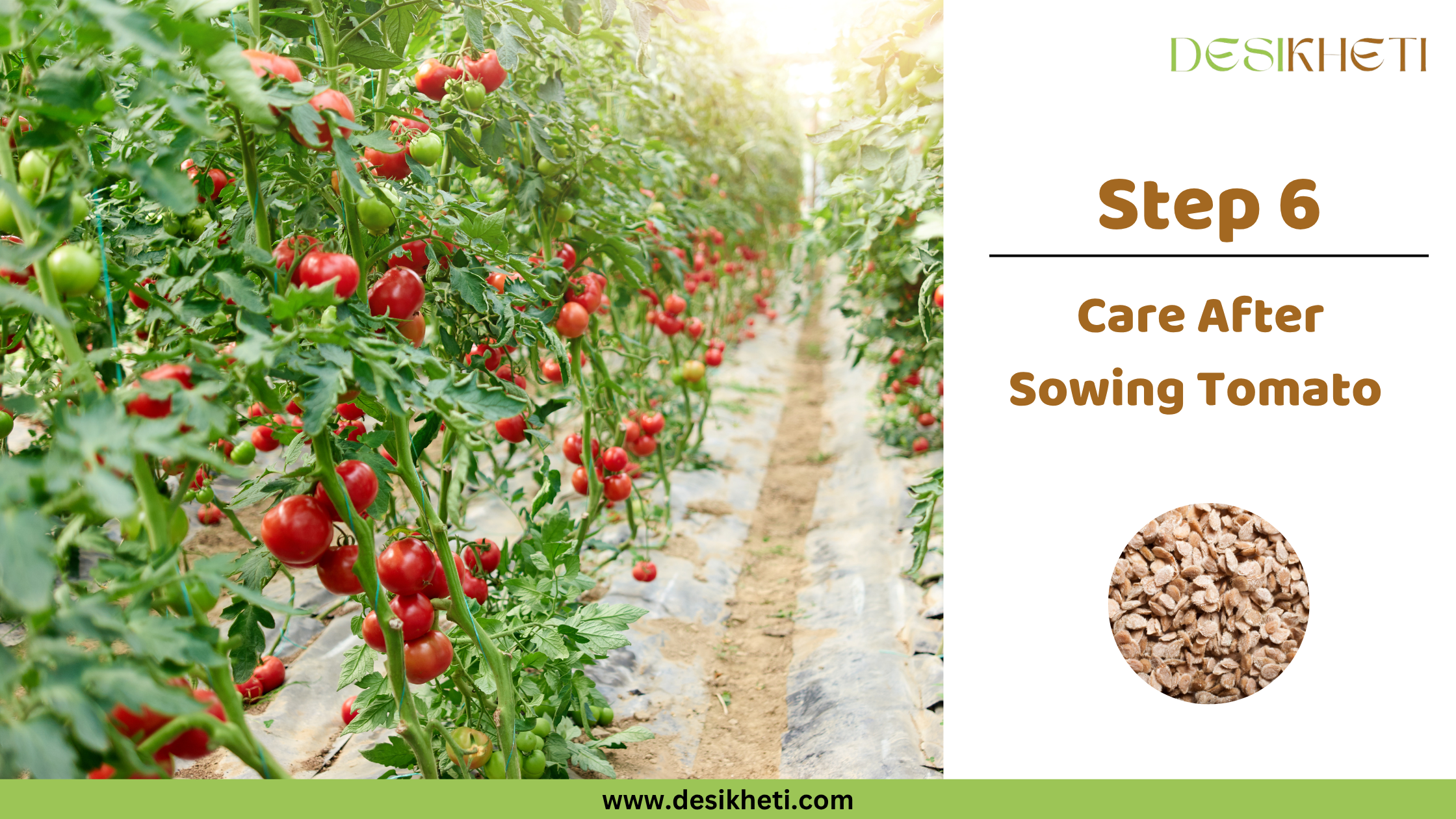
Water Management:
Tomato plants have deep roots that can reach up to 120–150 cm, giving them some drought tolerance. They require adequate moisture for healthy growth. However, both too much and too little water can harm the crop. The first irrigation can be done right after transplanting. After that, water lightly every 3–4 days in summer and every 10–15 days in winter, depending on weather conditions and soil moisture.
Weed Management:
Two to three weddings can be done before flowering for good crop growth. Weedings should be done at suitable intervals depending on weed intensity.
Step 7: Harvesting Tomato
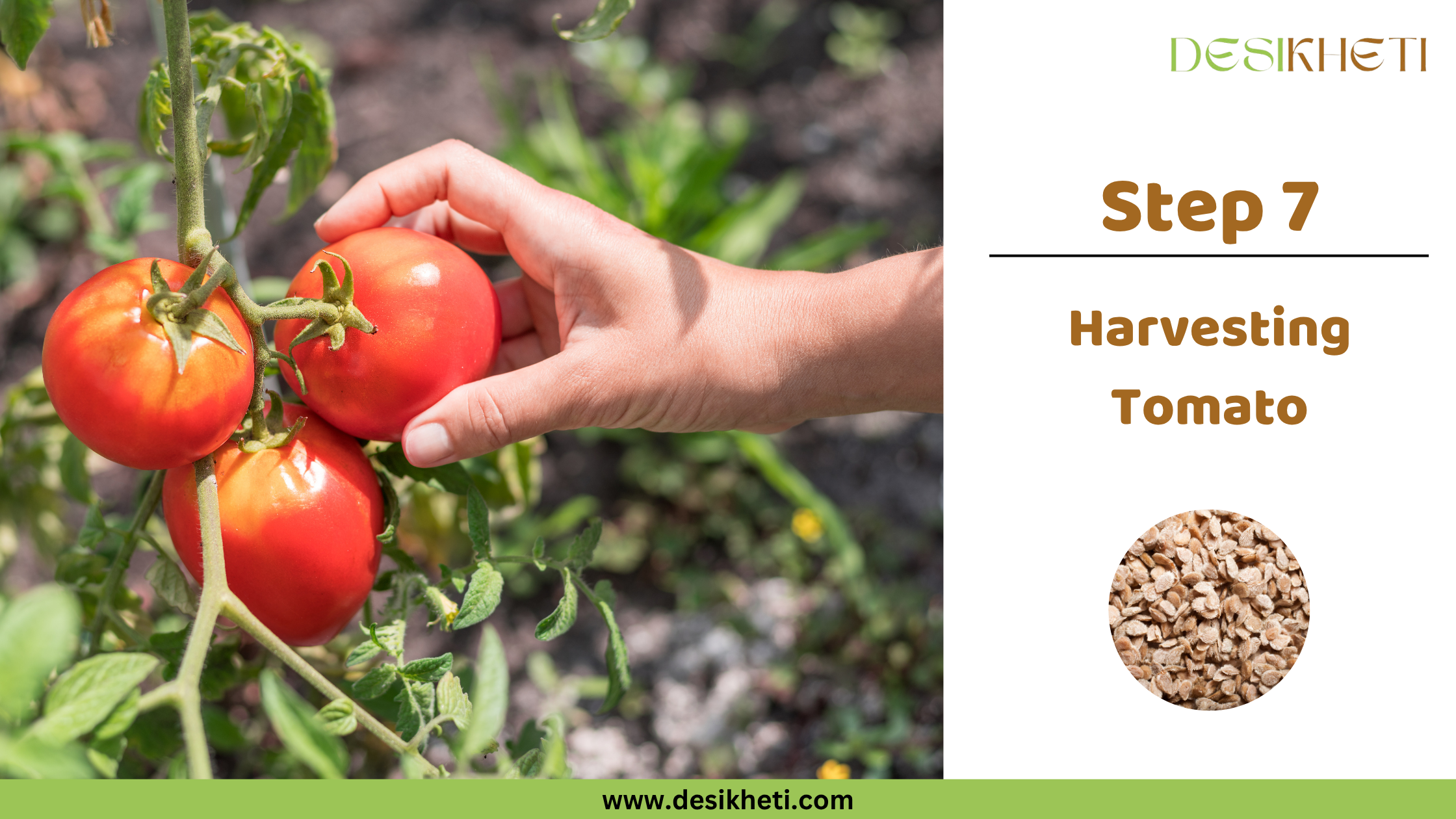
Tomatoes are harvested at different stages depending on their use and how far they need to be transported. For long-distance markets, fruits are usually picked at the mature green stage, when they are fully grown but still firm, with a light green or slightly yellowish color near the stem.
For nearby markets, tomatoes can be harvested at the hard ripe stage, when the fruit turns fully pink or red but remains firm.

Common FAQs Related to Tomato Seed Sowing
Q. What climate is best for growing tomatoes?
A. Tomatoes grow best in warm, temperate climates with daytime temperatures between 21°C and 24°C and night temperatures between 15°C and 20°C. Extremely high temperatures above 38°C can reduce fruit set and quality.
Q. Which soil is best for growing tomatoes?
A. Well-drained, fertile loamy soil with good moisture-holding capacity and a pH between 6.0 and 7.0 is ideal for tomato cultivation.
Q. What is the seed rate of tomatoes per acre?
A. The average seed rate is around 60 grams per acre, but it can vary depending on the sowing method and spacing.
Q. What is the scientific name of tomato?
A. The scientific name of tomato is Solanum lycopersicum.

Join DesiKheti Whatsapp Channel for regular updates, farming tips, and information on agriculture.
